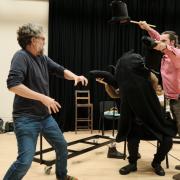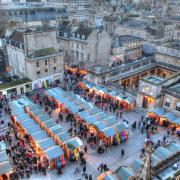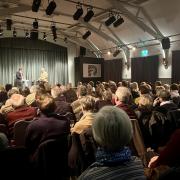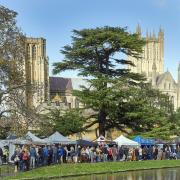The English Civil War polarised families and communities and nowhere more than Somerset, says Steve Roberts

It was a war setting father against son, brother versus brother. This normally quiet county felt the tramp of opposing armies, as battles and sieges played out within its borders.
Lansdown
Lansdown is a suburb of Bath, in the county’s north-east and Lansdown Hill is where the first battle occurred on 5 July 1643. A Parliamentarian army, 7,000 strong, held the hill under Sir William Waller, denying Royalists entry to Bath.
The latter, led by Sir Ralph Hopton, were of similar strength. To illustrate how friendships suffered, Waller and Hopton wrote each other letters throughout, whilst fighting the other’s army. They wrote of ‘this war without an enemy’.
Hopton decided on discretion given Waller’s strong position and withdrew. Waller, frustrated at seeing his hilltop advantage discounted, sent cavalry after the Royalists, who, given little option, turned and fought, pushing the horsemen back up the hill.
With fire in their veins, Hopton’s men went for Waller next, aiming to push him right off his perch. In the fierce action, the Royalists ejected the Parliamentarians off the hilltop, the latter sheltering behind a wall.
Both sides fought to a standstill, Waller retiring to Bath, whilst Hopton held the hill. Waller’s withdrawal was a masterpiece, with fires burning, weapons in situ and standards fluttering, kidding Royalists they were still there.
The outcome was inconclusive. The Royalists gained the hill, but at some cost; a Pyrrhic victory. Hopton was temporarily blinded at the moment of triumph, courtesy of an ammo cart exploding nearby.
There is today a monument to a Royalist officer, Sir Bevil Grenville. It stands on the hill’s edge, a weathered stone griffin looking out from its top. Grenville was poleaxed from his horse, via an almighty blow to the head, having attained the summit.
Taunton
One year on, Taunton came under siege. Parliamentarians, commanded by Robert Blake, were besieged by Lord Goring’s Royalists, desperate to take the last Parliamentarian enclave in the south-west.
Taunton held out for a year, with Blake declaring he had four pairs of boots, three of which he’d eat before he surrendered. Thatch was stripped from roofs for horses’ feed. A relief column got through to keep the defenders’ spirits up. The Royalists almost took it, but Taunton held; when it was finally relieved, over half the houses had been destroyed.
Taunton remained defiant, but paid for its anti-Royalism after the Restoration; the castle keep being demolished in 1662, leaving just the base.
Lanport, Crewkerne and Illminster
Almost two years after Lansdown, armies faced off again at Langport, south-east of Taunton. Parliamentarians under Sir Thomas Fairfax headed into Somerset to relieve Taunton and bring Goring’s western Royalist army to battle. On 5 July 1645, Fairfax fast-marched to Crewkerne, 20 miles from Taunton, where Goring had abandoned his siege.
Fairfax sent forward a detachment under Edward Massey to find out what was happening. Massey surprised a Royalist detachment at Ilminster, commanded by Goring’s brother-in-law (George Porter), caught literally with its pants down. Some lay in the sun, others swam in the river; most were captured.
On 10 July Parliamentarian soldiers were heading west, trying to catch the remnant of the western Royalist army. Goring set up west of the Wagg Rhyne, a stream, no more than four feet wide in places. Where today’s B3153 crosses the stream on a bridge, there was a deep ford in 1645. Goring proposed to stand with cannon either side of the road and musketeers defending the hedgerows at water’s edge.
Most of Goring’s cannon had retired to Bridgwater and he had been caught out by the pace of the Parliamentarian advance, now having to fight a rearguard action with a depleted force.
Goring’s position was not as strong as it should have been. The Royalist leader had a liking for the ‘bottle’, not recommended when clear heads are needed and his men pillaged the area, losing the locals’ support. He was outnumbered (7,000 against 10,000). Goring’s drunkenness had apparently allowed supplies for Taunton to slip through his lines (oops).
By midday the Parliamentarians had neutralised the Royalist cannon, then taken the ford, allowing cavalry to gallop across (commanded by Oliver Cromwell, although Maj Bethell led the assault). They were up to their bellies in water. This was a thumping Parliamentarian victory; most battles were by this stage of the war. Goring retired towards Bridgwater.
To try to prevent a pursuit, he ordered houses in Langport set ablaze; he certainly knew how to alienate the locals. His army was virtually destroyed. Although only 300 had been killed, 2,000 were prisoners. It was the effective end of the war in the west.
The scene today is little changed. Land is used for farming and a small leap of the imagination is required to recreate July 1645.



























